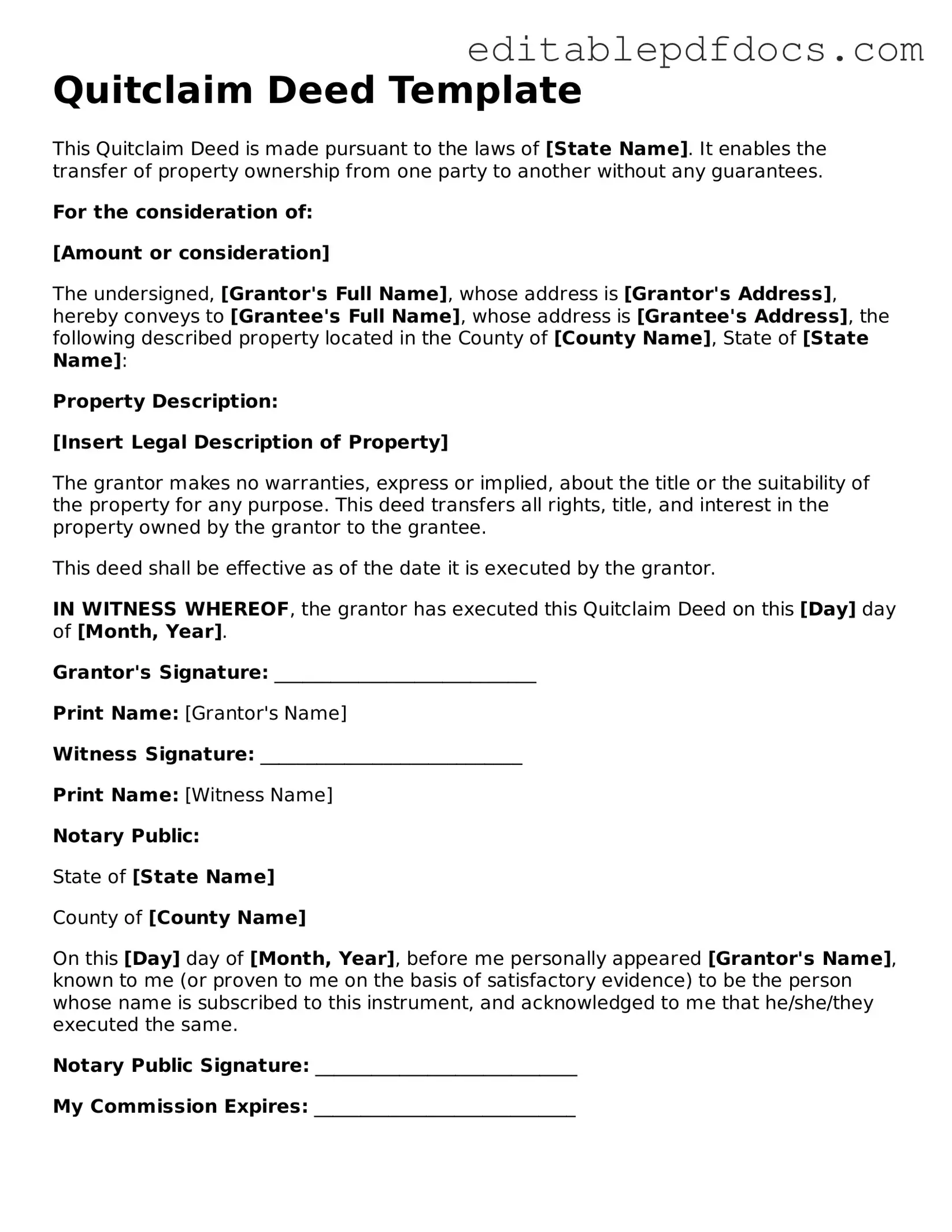The Quitclaim Deed form serves as a crucial instrument in real estate transactions, particularly when transferring ownership of property. This form allows an individual, known as the grantor, to relinquish any claim or interest they may have in a property to another party, referred to as the grantee. Unlike other types of deeds, a Quitclaim Deed does not guarantee that the grantor holds clear title to the property; it merely conveys whatever interest the grantor possesses, if any. This makes it an ideal option for situations involving family transfers, divorces, or clearing up title issues. Additionally, the Quitclaim Deed is often simpler and faster to execute than other deeds, as it typically requires less formal documentation and fewer legal obligations. However, it is essential for both parties to understand the implications of using this form, as the lack of warranties can lead to potential disputes over property rights. By carefully considering the circumstances and intentions behind the transfer, individuals can make informed decisions regarding the use of a Quitclaim Deed.
